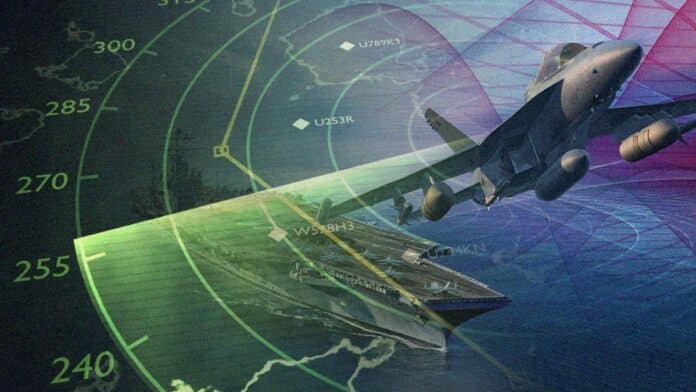In the rapidly evolving landscape of modern warfare, traditional tactics and strategies are being augmented by cutting-edge technologies, And electronic warfare is an emerging field in this landscape. Among the most significant advancements in the realm of electronic warfare (EW), which encompasses the use of electromagnetic energy to gain a tactical advantage over adversaries. In this article learn the intricacies of electronic warfare, and explore its various components, including tactics, and implications for modern warfare.
Contents
Understanding Electronic Warfare
Definition and Scope
Electronic Warfare is the Digital Battlefield in the Modern Warfare landscape, it refers to the use of electromagnetic energy to control the electromagnetic spectrum (EMS) and exploit it for military purposes. It encompasses three primary components or domains: electronic attack (EA), electronic protection (EP), and electronic warfare support (ES).
Components of Electronic Warfare
a) Electronic Attack (EA): This component involves the offensive use of electromagnetic energy to disrupt or disable enemy systems. In EA Techniques that can be employed are jamming, deception, and directed energy weapons.
b) Electronic Protection (EP): EP focuses on defensive measures to safeguard friendly systems from enemy electronic attacks. It involves the use of techniques such as encryption, frequency hopping, and hardening of systems.
c) Electronic Warfare Support (ES): ES comprises the gathering, analysis, and interpretation of enemy electronic signals to gain intelligence. It assists in identifying threats, tracking enemy movements, and developing countermeasures.
Electronic Warfare Tactics
Jamming
Jamming is a prominent technique in electronic warfare that involves transmitting a signal with sufficient power to overwhelm and disrupt enemy communication systems. It can be implemented by deploying jamming pods on aircraft or using ground-based jamming stations.
Directed Energy Weapons (DEWs)
Directed energy weapons employ focused beams of electromagnetic energy to disable or destroy enemy systems. High-power microwave (HPM) weapons and laser-based systems are examples of DEWs used in electronic warfare. Also, Read Operation Whitewash.
Cyber Warfare
As a subset of electronic warfare, cyber warfare focuses on exploiting vulnerabilities in computer networks and systems to gain an advantage in warfare. Cyber attacks can disrupt critical infrastructure, disable communication networks, or compromise sensitive data.
Implications of Electronic Warfare
Changing the Nature of Warfare
Electronic warfare has transformed the nature of warfare, offering new avenues to gain strategic advantages. It has become an essential component of military operations, influencing the planning and execution of missions.
Challenges and Countermeasures
As electronic warfare capabilities continue to evolve, so do the challenges faced by militaries. Adversaries must continually develop countermeasures to protect their systems from electronic attacks, ranging from advanced encryption techniques to enhanced situational awareness.
Ethical and Legal Considerations
The proliferation of electronic warfare technologies raises ethical and legal questions. International laws and treaties, such as the Geneva Conventions, must be adapted to address the implications of cyber warfare and the use of directed energy weapons.
Future Developments
Artificial Intelligence and Machine Learning
The integration of artificial intelligence (AI) and machine learning (ML) algorithms is expected to revolutionize electronic warfare. AI-powered systems can enhance situational awareness, automate decision-making processes, and develop adaptive countermeasures.
Quantum Technologies
Quantum technologies, such as quantum computing and quantum communication, hold the potential to disrupt electronic warfare. Quantum-resistant encryption methods and quantum-based sensors can provide enhanced security and detection capabilities.
Swarming and Autonomous Systems
The deployment of swarming and autonomous systems can significantly impact electronic warfare. Networked drones and autonomous vehicles can execute coordinated electronic attacks or provide enhanced electronic support, increasing the complexity of future conflicts.
FAQs of Electronic Warfare
-
Electronic warfare has three main components: electronic attack (offensive measures), electronic protection (defensive measures), and electronic warfare support (gathering intelligence).
-
Electronic attack disrupts or disables enemy systems using techniques like jamming (interfering with communication signals) and deception.
-
Jamming is a technique in electronic warfare where powerful signals are transmitted to interfere with and disrupt enemy communication systems.
-
Directed energy weapons are focused beams of electromagnetic energy used in electronic warfare to disable or destroy enemy systems.
-
Cyber warfare is a subset of electronic warfare that involves using computer networks and systems to exploit vulnerabilities and gain an advantage in warfare.
-
Electronic protection involves defensive measures to protect military systems from enemy electronic attacks, such as encryption and hardening systems against intrusion.
-
Electronic warfare support involves gathering, analyzing, and interpreting enemy electronic signals to gain intelligence and track enemy movements.
-
Challenges in electronic warfare include developing countermeasures to protect against electronic attacks, such as advanced encryption and improving situational awareness.
-
Electronic warfare has transformed modern warfare, providing new ways to gain a tactical advantage by disrupting enemy systems and gathering intelligence.
-
The ethical considerations in electronic warfare revolve around the responsible and ethical use of these capabilities, ensuring compliance with international laws and treaties.
-
International laws and treaties need to adapt to address the implications of cyber warfare and the use of directed energy weapons, ensuring responsible and lawful conduct.
-
AI can enhance electronic warfare by improving situational awareness, automating decision-making processes, and developing adaptive countermeasures.
-
Quantum technologies, like quantum computing and communication, offer enhanced security and detection capabilities, providing better protection against electronic warfare threats.
-
Future developments in electronic warfare may include advancements in AI, quantum technologies, and the deployment of swarming and autonomous systems for electronic attacks or support.
-
Electronic warfare capabilities play a crucial role in national security, enabling countries to protect their systems and gain advantages in conflicts.
-
Militaries undergo specialized training and conduct exercises to develop skills in electronic warfare, simulating different scenarios and testing equipment and techniques.
-
Potential risks in electronic warfare include the loss of critical systems, disruption of civilian infrastructure, and the need to protect sensitive data from cyber-attacks.
-
Electronic warfare can disrupt civilian infrastructure and communication systems if they are targeted or affected by interference, potentially impacting daily life and services.
-
Electronic warfare differs from traditional warfare tactics because it focuses on the use of electromagnetic energy to gain an advantage. Traditional warfare tactics involve physical forces, such as ground troops, tanks, and aircraft, while electronic warfare operates in the invisible realm of the electromagnetic spectrum. Electronic warfare disrupts or manipulates enemy communication and sensing systems, aiming to disable or deceive them. Traditional warfare tactics, on the other hand, involve direct engagement with enemy forces, capturing territory, and destroying enemy infrastructure. In electronic warfare, the emphasis is on gaining information, denying the enemy’s ability to communicate and coordinate, and using technology to exploit vulnerabilities. Traditional warfare tactics involve a broader range of activities, including troop movements, weapons deployment, and physical combat. Overall, electronic warfare complements traditional warfare tactics by providing a digital battlefield where information and control over the electromagnetic spectrum are critical for gaining an advantage.
Conclusion
Electronic warfare has emerged as a crucial domain within modern warfare, wielding the power to shape the outcome of battles. Its components, tactics, and implications demonstrate the transformative nature of electromagnetic spectrum manipulation in military operations. As technology continues to advance, the future of electronic warfare holds even more promise and challenges.
However, it is important to approach electronic warfare with caution and consideration for ethical and legal implications. International laws and regulations must adapt to address the evolving nature of warfare, ensuring the responsible and ethical use of electronic warfare capabilities. Collaboration and dialogue among nations are crucial in establishing guidelines and norms to prevent misuse and minimize the potential for escalation.
In conclusion, electronic warfare has revolutionized the battlefield, providing new avenues for gaining a tactical advantage in modern warfare. From jamming enemy communications to leveraging cyber capabilities, electronic warfare has become an integral part of military operations. As technology continues to advance, the landscape of electronic warfare will evolve, demanding constant innovation, countermeasures, and ethical considerations. Nations need to invest in research, development, and cooperation to navigate the complexities of electronic warfare and maintain a balance between military capabilities and responsible use.
Sources
- Schleher, D. Curtis. “Introduction to electronic warfare.” Dedham (1986).
- “Electronic Warfare.” IEEE Aerospace and Electronic Systems Magazine, vol. 18, no. 7, July 2003, pp. 49–54.
- ELECTROMAGNETIC SPECTRUM OPERATIONS DOD Needs to Address Governance and Oversight Issues to Help Ensure Superiority Report to the Committee on Armed Services, House of Representatives United States Government Accountability Office. 2020.
- Trueman, Jim. Quantum Technology Roadmap Report Consolidated from Workshops in London and Glasgow.
-
- Clark, Bryan. “The Fall and Rise of Russian Electronic Warfare.” IEEE Spectrum, IEEE Spectrum, 30 July 2022, spectrum.ieee.org/the-fall-and-rise-of-russian-electronic-warfare. Accessed 31 May 2023.
- “Return of Ground-Based Electronic Warfare Platforms and Force Structure.” Army University Press, 2019. Accessed 31 May 2023.
FACT CHECK: We strive for accuracy and fairness. But if you see something that doesn’t look right, please Contact us.
DISCLOSURE: This Article may contain affiliate links and Sponsored ads, to know more please read our Privacy Policy.
Stay Updated: Follow our WhatsApp Channel and Telegram Channel.












